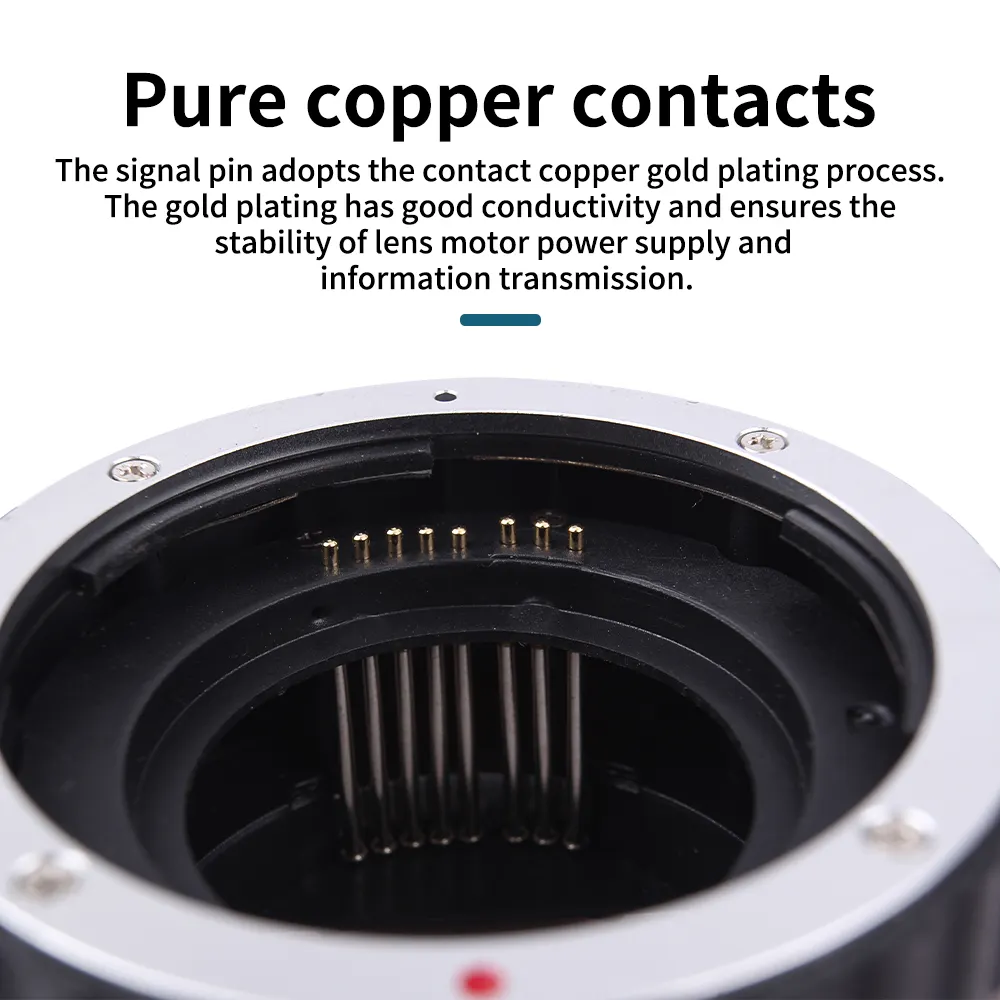

Time:2025-03-26 Views:1

Macro lens adapters are frequently subjected to alternating loads during normal use. When a photographer attaches and detaches the lens, adjusts the focus, or moves the camera while the adapter is in place, the adapter experiences varying forces. Understanding its alternating load resistance is essential for ensuring its reliability and longevity.
The mechanical structure of the macro lens adapter is designed to withstand these alternating loads. The connection points between the adapter and the camera body, as well as those between the adapter and the lens, are engineered to be robust. For example, the threads used for attaching the adapter to the camera and lens are often made with precision to ensure a secure fit. High - quality adapters may also use locking mechanisms to prevent accidental detachment during movement, which helps in reducing the stress caused by sudden changes in load.
The materials used in the adapter also contribute to its alternating load resistance. Metals like brass are commonly used in some parts of the adapter due to their good mechanical properties. Brass has a relatively high strength and can withstand repeated stress without deforming easily. In addition, certain polymers with high impact - resistance, such as acrylonitrile - butadiene - styrene (ABS), may be used in the construction of the adapter. ABS can absorb energy from alternating loads, reducing the likelihood of cracking or breakage.
To evaluate the alternating load resistance of macro lens adapters, fatigue testing is commonly employed. In a fatigue test, a simulated alternating load is applied to the adapter. This can be done using a mechanical testing machine that applies cyclic forces similar to those experienced during normal use. The test is continued for a large number of cycles until the adapter fails or shows signs of significant wear. The results of these tests are used to predict the lifespan of the adapter under real - world conditions.
In practical use, photographers should handle their macro lens adapters with care to minimize excessive alternating loads. Avoiding rough handling, such as sudden jerking or dropping the camera with the adapter attached, can help extend the adapter's life. Regular inspection of the adapter for any signs of wear, such as loose threads or cracks, is also advisable to ensure its continued performance.
Read recommendations:
camera cage side handle design
Multi-Function Super Clamp for Photography Studio Video Camera Lighting Photo Accessories